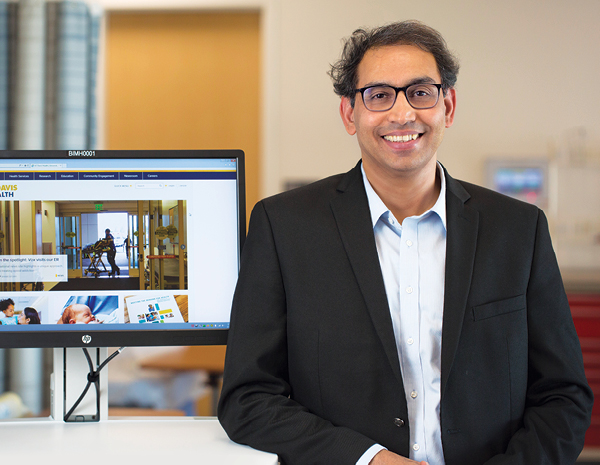
Engineering + Mathematics + Nursing =
Person-centered care
Every trip to a clinician starts with speaking to a medical assistant, who asks basic personal questions that may seem mundane. The data is then entered into an electronic health record (EHR). But what if the information during your clinic visit or hospital stay could be analyzed to predict and prevent deadly diseases, saving patients and health care providers millions of dollars in the process?
As an engineer, mathematician and doctoral prepared nurse, Betty Irene Moore School of Nursing at UC Davis alumnus Satish Mahajan works daily to bring us one step closer to this reality.
“What once was studied through randomized control trials is now turned on its head,” says Mahajan, a registered nurse and 2015 doctoral graduate. “Now we can use the large amounts of data to improve how we care for people and optimize limited resources at the same time.”
As associate chief of research and innovation in patient care services at the VA Palo Alto Health Care System, Mahajan examines risk and predictive factors, mines data, applies mathematical models and, ultimately, uses this insight to target specific interventions focusing on patients’ wellness.
“From a 20,000-foot view, we’re trying to help chronic disease management,” Mahajan explains. “I use my statistics and engineering knowledge to manipulate large data sets and create and validate predictive models. But I still see myself as a nurse. We must be connected to the clinical environment in this work. You can’t take your foot off the pedal of any of these three areas.”
Mahajan credits the School of Nursing with providing the intellectual flexibility he needed to advance this work. Now, he hopes to get future students excited about the treasure trove of information untapped in the data.
“This is a revolution in health care research,” Mahajan says. “I hope in the next 10 to 20 years, we actually have the systems in place that help and guide clinicians to intervene optimally while in front of the patient in real time.”

